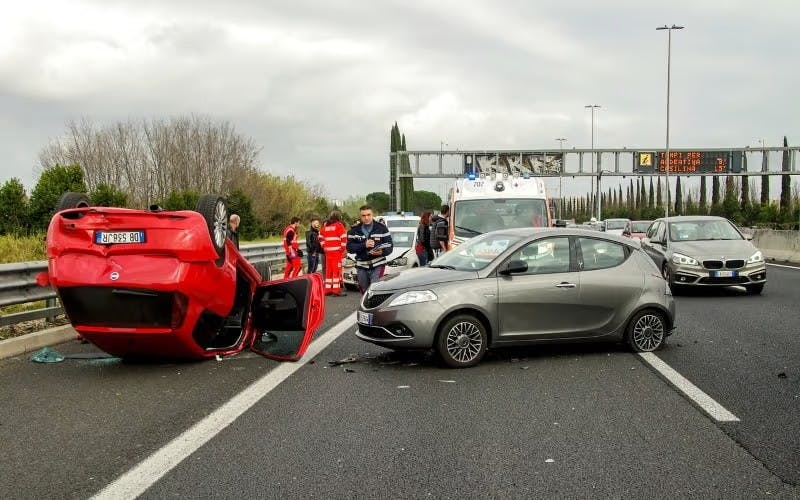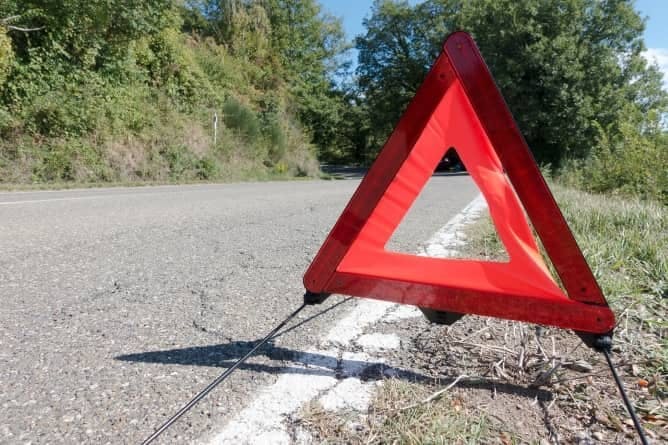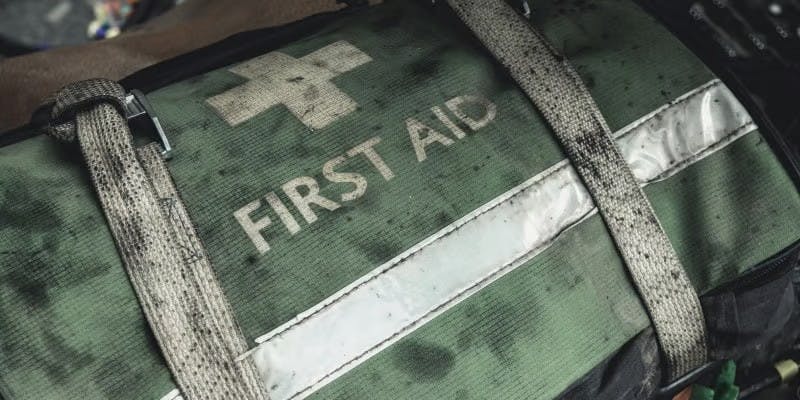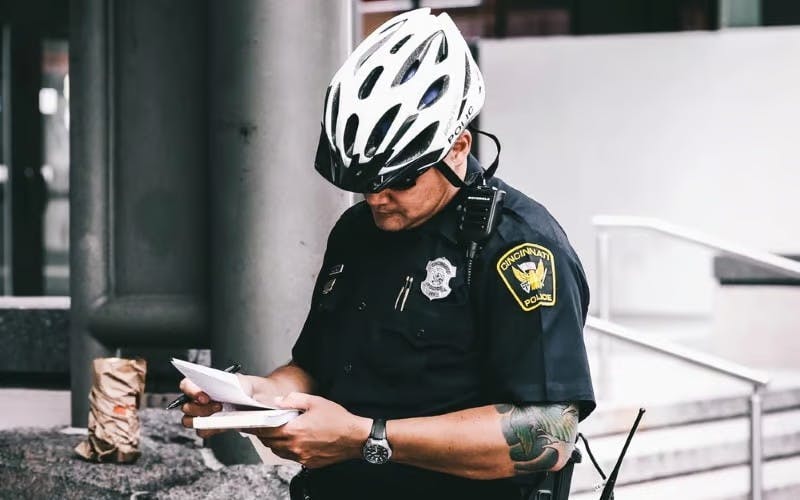
Short of being involved in a crash yourself, spotting a collision on the roads can be one of the most unnerving experiences a driver can go through. Adding to the stress of the situation is that, often, it's not always clear how you're meant to respond. Keeping a cool head, however, can help to resolve legal issues, get assistance to those who need it, and even save lives. That's why knowing what to do if you witness an accident is vital.
In this article, we'll cover the obligations you have as a bystander when a car accident takes place. We'll also offer advice on how you can help any victims of the incident, and how to ensure that you stay safe.
Do you need to stop when you witness an accident?
It's common knowledge that you must stop at the scene of any accident that you're involved in. Indeed, failing to do so can earn you a fine of up to £5,000 or six months' imprisonment. If you're only a witness to an accident, however, the rules are different.
Here, the Highway Code advises motorists not to “be distracted or slow down unnecessarily” when driving past an incident. This means that, not only is there no obligation to stop, but that there are times when doing so is to be actively avoided. Such instances include crashes on the other side of a dual carriageway. Here, stopping to offer assistance may obstruct the road, or, worse, cause a further collision.
This is not to say, though, that stopping at the scene of an accident is always discouraged. Imagine, for example, that you witness a serious crash that leaves everyone involved seriously injured. Here, your presence could help to save lives—provided you take the appropriate actions.
If I stop at the scene of an accident, what are the first steps to take?

1. Keep yourself safe
If you decide to stop and assist at the scene of an accident, your first priority should be ensuring that you don't aggravate the situation. Only stop if you are sure that it is safe to do so—don't put yourself in danger.
2. Warn others
Use your hazard warning lights on your approach to warn drivers behind you of the incident. Once stopped, it may also help to place a warning triangle in the road. If you do this, place it around 45 metres (147 feet) from the incident. Do not place a warning triangle on a motorway, though—the high speeds make doing so incredibly risky.
3. Stop safely
When coming to a stop, be sure to follow the usual procedure. Pull over in a safe, legal and convenient position, checking your mirrors regularly as you do so. For the avoidance of doubt, you should also signal while pulling over.
4. Prevent further danger
After an initial accident, more danger may be looming, such as fire or explosions. To help avoid this, switch off all engines which are still running. Do not smoke at the scene of an accident, and ensure anyone at the scene refrains from doing so, too. Beware that any crash site may be littered with spilt fuel or broken glass, so approach with care.
5. Getting help
Firstly, check if anyone is injured and requires an ambulance. Then, call the emergency services. If you're on a motorway, the best way to do so is to call via an SOS phone located at the side of the road. These phones will let the operator know your exact location.
On other types of road—or if no SOS phone is nearby—call 999 from your mobile. If you're on a motorway, the best way to determine your location may be via the use of marker posts. You may also let the operator know your direction of travel (e.g., eastbound) and any junctions you passed.
Be detailed in your description of the accident, letting the operator know the nature of the accident, how many people are involved, and whether there are any injuries. This will ensure that they are able to coordinate the most appropriate response to the incident.
What assistance should I offer when witnessing an accident?

After (and only after) calling the emergency services, you may need to offer immediate assistance yourself to anyone involved in the incident.
The Highway Code advises that you may move any uninjured people to safety. If the accident is taking place on a motorway, this place should be somewhere “well away from the traffic, the hard shoulder and the central reservation”.
In general, you should not move any injured victims, with the exception of those in immediate danger of fire or explosion, or if directed to do so by the emergency services. Unless essential, you should also refrain from removing a motorcyclist's helmet.
Instead, attempt to keep casualties warm, dry and comfortable—for example, by covering them with a blanket. You should also offer them reassurance, making sure they aren't left alone and don't wander into the path of traffic. Avoid giving casualties anything to eat or drink, and stay with them until the emergency services arrive.
Shock
At the scene of an accident, it's likely that you may come across victims suffering from shock. This occurs when blood flow in the body is too low, and can be life-threatening. Visit St John Ambulance for tips on how to recognise shock, and actions to take to help victims showing symptoms.
Emergency care
While the emergency services are best equipped to deal with any serious incidents on the road, there are some key ways that you, as a witness, can help to assist the injured and even save lives.
Those who have undergone first aid training through an organisation such as St John Ambulance or the British Red Cross will find the skills they've learned may prove invaluable. Nonetheless, there are some actions that even a beginner can do to help. It's for this reason that you should make a first aid kit one of the essential items you keep in your car.
The Highway Code advises remembering the letters DRABC:
- D Danger
- R Response
- A Airway
- B Breathing
- C Circulation
You should also check for any burns the casualty may be suffering from. The Highway Code now suggests cooling any burns with cool, clean water for a minimum of 20 minutes, and covering with cling film if available.
For full advice on assistance you may be able to offer, visit Annex 7 of the Highway Code, which offers crucial advice on first aid in the event of a crash.
What information will I need to provide as a witness?

It is the duty of those involved in an accident to report it to the police. However, even as a bystander, you may be asked to provide information regarding what you saw. Those involved may ask you to give your impartial view of events, and may ask for your details to send to their insurer so as to corroborate their claim. Meanwhile, you may also be asked to provide a witness statement to the police.
Remember that witnessing an accident can be a very stressful event and that, as a result, your memories may become blurred. To help make sure you remember events accurately, you may wish to take photos, and note down key information, such as registration numbers and details of those involved. Though it may seem somewhat tedious or intrusive to do so, your involvement may be the only way to establish the truth behind what happened.
Subscribe for driving advice, offers & more
We'd love to let you know about our courses, news and offers via email. You may unsubscribe at any time.
Star Genie Limited trading as PassMeFast. Company number 10093359
Copyright © 2024 owned by Star Genie Limited
PassMeFast, Blue Tower, MediaCityUK, Salford, M50 2ST
